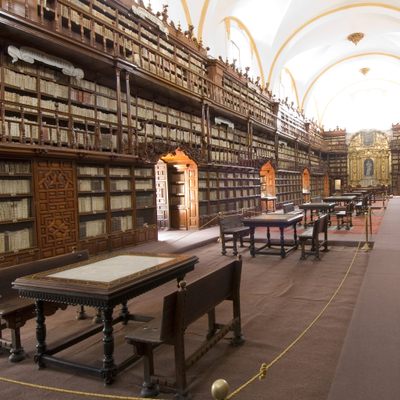About
Biblioteca Palafoxiana, the first public library of the Americas, was founded in 1646 by bishop Juan de Palafox. He donated 5,000 of his own books to the Catholic seminary he had recently created in Puebla, Mexico. In his donation certificate, Palafox stated he wanted there to be a public library where all kinds of people, not only clergy, could devote themselves to the study of liberal arts and science.
In 1773, bishop Francisco Fabián y Fuero had the library remodeled, so that it could hold a growing collection of books and manuscripts. These tomes covered everything worth studying at that time, including classical and indigenous languages, philosophy, theology, canon law, geography, astronomy, natural science, medicine, and physics.
The Biblioteca Palafoxiana is now a book museum as well as a research library with more than 45,000 books that are kept in lavish baroque bookshelves under an arch vaulted ceiling. The library owns nine incunables (books printed in Europe before 1500) and eight of Mexico’s earliest printed books, from the 16th century. Some of its oldest, rarest, and most valuable volumes include The Nuremberg Chronicle, printed in Nuremberg in 1493; Andreas Vesalius' De humani corporis fabrica, printed in Basel in 1543; and two different editions of the Malleus Maleficarum, from 1596 and 1669.
Related Tags
Know Before You Go
The Biblioteca Palafoxiana is located on the top floor of the Casa de la Cultura in the Centro Histórico of Puebla city. It's open from Tuesday to Sunday, 10 a.m. to 6 p.m. The admission fee is 40 pesos (about $2 USD) for adults, with discounts for children, students, and teachers, and free entrance on Tuesdays.
Flavors of Oaxaca: Markets, Mezcal & Home-Cooked Meals
A Culinary and Cultural Journey Through Oaxaca.
Book NowPublished
September 9, 2019







































